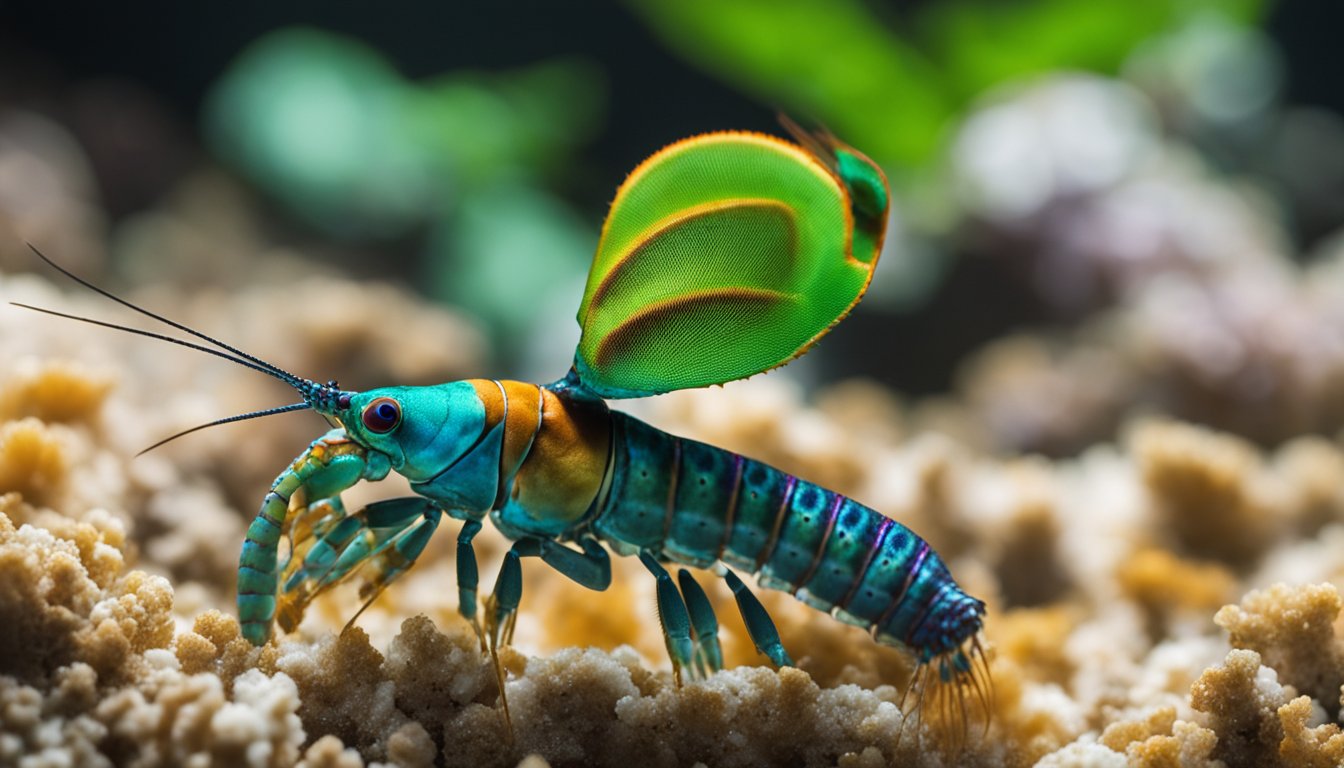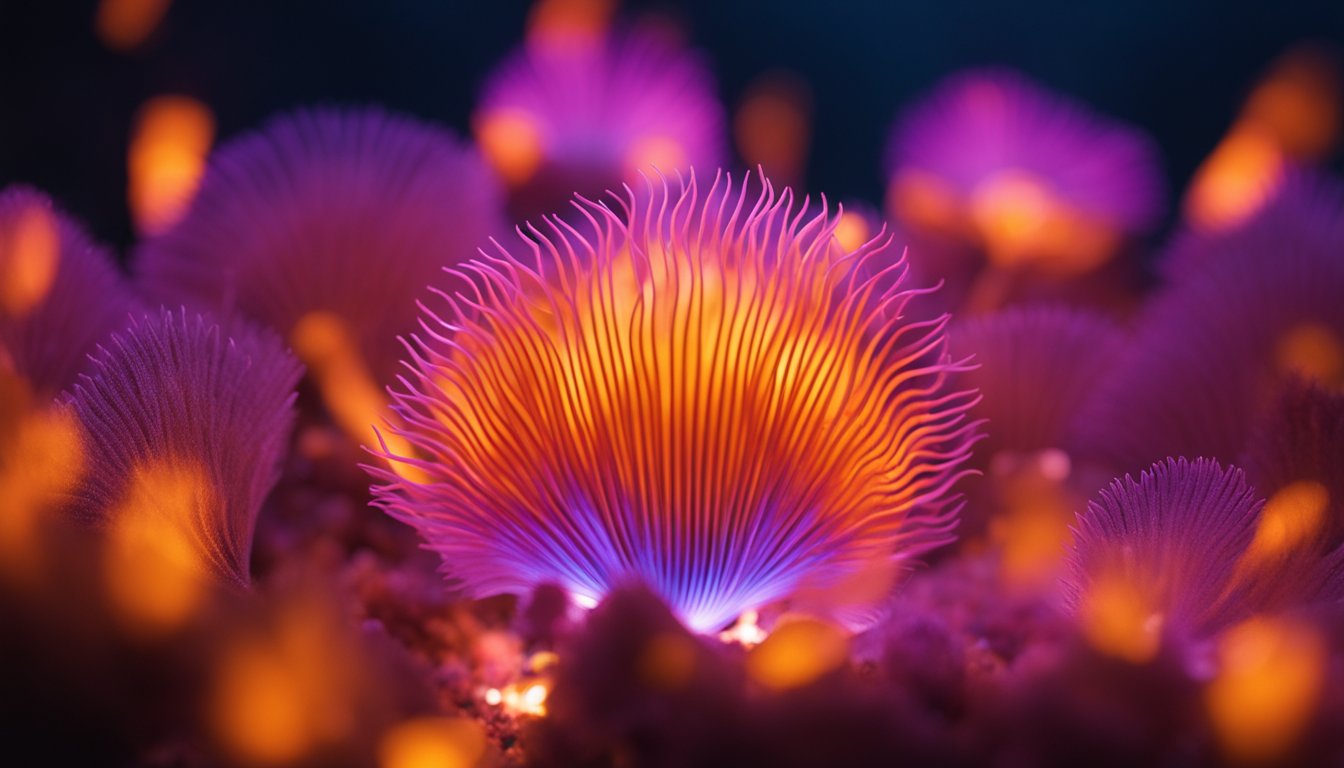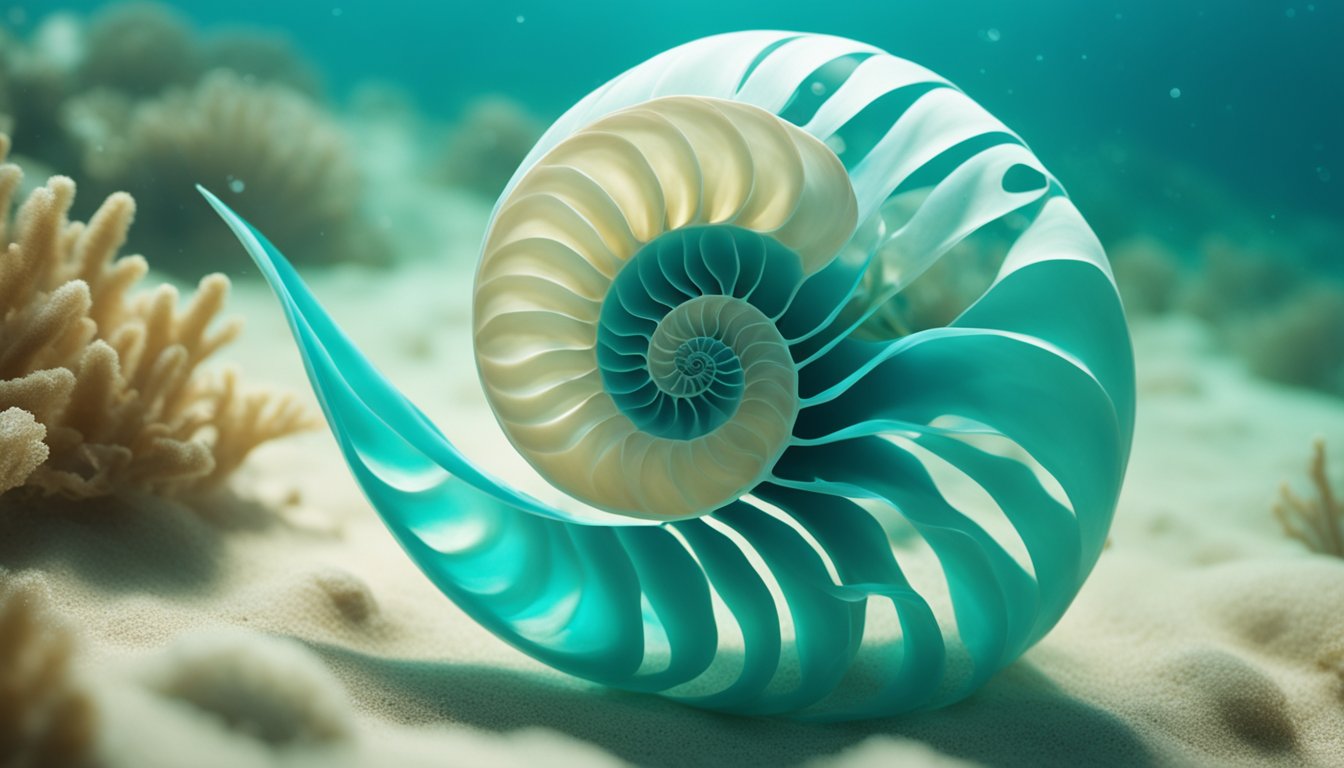Imagine you’re exploring the colorful coral reefs under the sea, surrounded by all kinds of lively sea creatures.
Among the vibrant parade of marine life, there’s a particularly tiny creature that commands respect—the blue-ringed octopus.
These fascinating beings are a masterpiece of nature’s artistry with their glowing blue rings that tell a story of both beauty and caution.

Now, you might be wondering about these little octopuses that can fit into the palm of your hand.
They’re special not only because of their dazzling appearance, but also because of their astonishing abilities.
When they’re out and about, the blue-ringed octopus seems just like any other denizen of the deep.
But when they feel threatened, their rings light up in a brilliant, electric blue, signaling to everyone around that it’s best to keep a safe distance.
What’s the reason for such a display?
Well, it’s their way of communicating, “Watch out!” You see, our small friends are one of the most venomous creatures in the ocean.
They carry a kind of venom that’s powerful enough to help them catch their favorite snacks, like crabs and shrimp, and protect themselves from predators.
Despite their small size, they certainly pack a punch!
So let’s dive deeper into the world of the blue-ringed octopus and discover what makes them such a mighty force in the underwater kingdom.
Physical Description

As we explore the blue-ringed octopus, we’re about to meet a marvel of the sea.
This tiny but powerful creature has some fascinating physical features that are worth our attention.
Vibrant Colors
Envision us holding a kaleidoscope to the ocean’s wonders, and right there, we’ll find the blue-ringed octopus stealing the show.
Across its soft, squishy body, up to 60 small, blue rings can mesmerize us with their vivid glow.
What’s really thrilling is how these rings can flash up to 3 flashes per second when the blue-ringed octopus feels threatened or wants to communicate.
It’s like watching a light show underwater!
Size and Anatomy
Remember our little friend from the ocean? Despite its remarkable appearance, the blue-ringed octopus is quite petite.
We’re looking at a creature that could snugly fit in our palm, with an arm span no wider than 20 centimeters.
But don’t let size fool us – within its tiny body lies a complex anatomy.
Its eight arms are not only for moving and grabbing, but they also have hundreds of tiny suction cups that help it taste the water and grab onto surfaces or prey.
Isn’t that cool?
Discover more about this fascinating animal by exploring the hunt for the elusive blue-ringed octopus.
Habitat and Distribution

Let’s dive into where these tiny titans live and the expanse of their underwater neighborhoods!
We’re about to uncover the places these pint-sized powerhouses call home and how far their reach extends across our oceans.
Geographical Range
We find the blue-ringed octopus mostly in the tide pools and coral reefs of the Pacific and Indian Oceans, with a geographical range that hugs the coasts from Japan to Australia.
These areas are brimming with life, and our eight-armed friends thrive there.
It’s like their own natural playground with warm waters that they seem to love.
Natural Habitats
Imagine a cozy home tucked away in the nooks and crannies of coral reefs or hiding in plain sight among the seashells and rocks of a tide pool.
That’s the kind of place a blue-ringed octopus goes to relax.
These habitats offer them plenty of opportunities to hunt their favorite snacks and play hide-and-seek with both friends and predators.
Warm, shallow waters are their favorite, especially when they’re teeming with tasty treats!
Behavior

When we talk about the blue-ringed octopus, we’re uncovering the secret lives of one of the ocean’s most fascinating and enigmatic creatures.
These tiny octopuses may be small, but their behaviors are complex and intriguing.
Hunting Tactics
In the wild, we find that the blue-ringed octopus is quite the crafty predator.
It spends most of its day hiding in crevices, ready to pounce on unsuspecting prey with a surprise attack.
Our little friend paralyzes its meal using venom that is powerful enough to take down prey much larger than itself.
Imagine having the strength to zap something twice your size – pretty impressive, right?
Mating Rituals
When it comes to finding a partner, the blue-ringed octopus has specific rituals.
Courtship involves gentle touches with its tentacles, and the male uses a specialized arm called a hectocotylus to transfer sperm packets directly to the female.
This isn’t quite like a box of chocolates or a bouquet of flowers that we might give to someone we like, but for octopuses, it’s their way of saying, “Let’s make some baby octopuses!” Isn’t it cool how every creature has its special ways of showing affection?
Venom

Let’s get up close with the blue-ringed octopus’s venom, which is as fascinating as it is fearsome!
We’ll discover what makes this toxin super powerful and how it affects those who are unlucky enough to cross paths with it.
Ready for a deep dive into the ocean’s tiny chemist?
Chemical Composition
Our little octopus friend is a master mixologist, but not the kind we’d want to visit at a juice bar.
Instead of blending smoothies, it whips up a special venom made up of some pretty complex ingredients. The star of the show is tetrodotoxin.
It’s the same toxin you might have heard about in pufferfish, and it’s incredibly potent. Just a drop can cause a lot of trouble!
Effects on Prey and Predators
When our octopus uses its venom on its dinner, such as a crab, the effects are super speedy and super effective.
The tetrodotoxin zaps the crab’s nerves and muscles, making it say “night-night” almost instantly!
This isn’t just impressive; it’s crucial, because it means the octopus can grab a meal without it scurrying away.
But what if a bigger fish thinks our octopus looks tasty? The venom is there to say, “Back off, buddy!” And if humans accidentally get involved?
We really don’t want to. Touching these tiny creatures can lead to big trouble, like muscle weakness and difficulty breathing.
So, let’s remember, we can admire their beauty and power, but only from a respectful distance.
Conservation Status
In our sea of knowledge about ocean creatures, the conservation status of the blue-ringed octopus is a treasure waiting for us to discover.
Let’s dive into the challenges they face and how we protect these tiny but mighty beings.
Threats to Survival
We know that the blue-ringed octopus is not just gorgeous with its iridescent rings but also a bit of a superhero when it comes to survival.
However, like many amazing sea critters, they face threats from us humans and changes in their environment.
Pollution from land makes their homes murky and unhealthy. Fishing nets unintentionally snag them sometimes, which puts them in grave danger.
Their habitat is also at risk due to human activities. By understanding these threats, we can better figure out how to help our eight-armed pals.
Protection Efforts
We’re rolling up our sleeves to protect these cool octopuses.
Some areas of the ocean are now protected, meaning no fishing or polluting, which gives our friends a safe place to live.
Scientists are also keeping an eye on their numbers and where they live to help make other smart plans for keeping them safe.
We can all chip in by keeping our beaches clean and our oceans free of trash. Every little bit helps when it comes to protecting our blue-ringed buddies.
Frequently Asked Questions
Let’s explore some amazing facts about the blue-ringed octopus, starting from how it hunts to the significant role it plays in its underwater world.
How does the blue-ringed octopus use its venom?
When we’re talking about the blue-ringed octopus, we’re talking about one of the most incredible creatures in the sea.
It uses its venom to catch its prey and defend itself. The octopus bites its target and delivers a powerful venom that contains tetrodotoxin.
This toxin can paralyze and even kill in minutes.
Thankfully, the blue-ringed octopus isn’t aggressive and usually only uses its venom when provoked or stepped on.
Where can you find the blue-ringed octopus in the wild?
If we go on an underwater adventure in the Pacific and Indian Oceans, we’re likely to find the blue-ringed octopus in shallow reefs and tide pools.
They love the warm coastal waters of places like Australia, Japan, and Indonesia.
Remember, their distinctive blue rings really stand out when they feel threatened!
What should someone do if they are bitten by a blue-ringed octopus?
If someone is bitten, it’s crucial that we act fast. The person needs immediate medical attention. While waiting for help, we should administer first aid.
Keep the bitten limb still and apply pressure to the wound.
This is not the time for home remedies or to second guess; a bite from a blue-ringed octopus can be life-threatening.
How can I identify a blue-ringed octopus?
To spot a blue-ringed octopus, look for its size and color.
They are small, usually about the size of a golf ball, and when they’re not showing off their rings, they blend in with a yellowish or beige skin.
When threatened, they display vibrant blue rings that are unmistakable. That’s their way of saying, “Back off!”
Why is the blue-ringed octopus considered one of the ocean’s most fascinating creatures?
Imagine being able to change your skin’s color and texture in a flash, or squeezing into tiny spaces to hide from predators!
That’s the life of a blue-ringed octopus.
Beyond their stunning looks, they are fascinating for their intelligence and complex behavior, like using tools and navigating mazes.
These octopuses carry within them a mystery and intelligence that captures our imagination.
What role does the blue-ringed octopus play in its ecosystem?
In our vast underwater community, every creature has a part to play, and the blue-ringed octopus is no exception.
By being both a predator and prey, it helps to maintain a balance in the food web.
It keeps the population of crabs and small fish in check and, in turn, provides a meal for larger animals.
Even the smallest creatures can have big roles in our ocean’s health.




